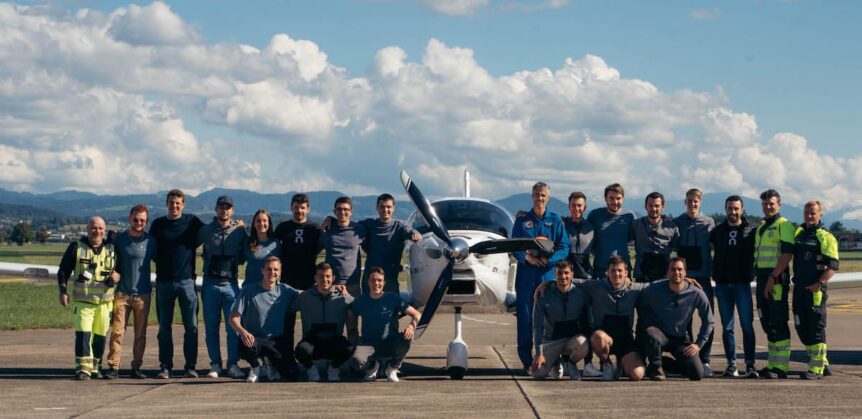Two groups of students, AeroDelft in The Netherlands and ETH Cellsius in Switzerland, are making great progress on some extremely advanced aeronautical projects. Each school’s ultimate goal seems to be flying with liquid hydrogen, and each has a slightly different approach to that goal. AeroDelft: Starting Small AeroDelft, the student-led project at Delft University of Technology, flew a 1/3 scale model that closely resembles e-Genius in July. Its 1,500 Watt (two kilowatt) motor is powered by 40 grams (1.411 ounces) of gaseous hydrogen initially, but will transition to liquid H2 later in the program. 380 grams (13.4 ounces) of the more potent fuel will allow three hours endurance and a range of almost 300 kilometers (186 miles) Since that flight, the team has exhibited at various trade shows and advanced work on its Sling 4 two-seat light aircraft. The 920 kilogram (2,024 pound) maximum takeoff weight aircraft, powered by a 110 kilowatt (147.4 horsepower) motor flies on battery power for …
Two Hydrogen-Powered Aerial Vehicles
Two very different hydrogen-powered aerial vehicles have come to our attention, each with a different mission, but both with endurance and range as primary functions. Both use a fairly straightforward fuel cell/motor arrangement to power their flights. Vicor/DMI Fuel Cell Drones Doosan Mobility Innovation (DMI) is a major drone manufacturer, and their largest products push against the FAA’s 55-pound (24.97-kilogram) weight limit. Their DM30, powered with a DS30 fuel cell and a 10.8 liter H2 tank weighs 21 kilograms and can carry a five kilogram (11 pound) payload. Carrying a full payload may require using the smaller seven-liter tank. Alessandro Mascellino, writing in EE Power, describes recent combination of resources that makes long-range drone deliveries possible. “The first machines built as part of the collaboration can fly two hours on a single charge and have already transported masks and emergency supplies between US Virgin Islands. The drones feature a number of power components by Vicor.” Partnering with Vicor, Doosan provides …


